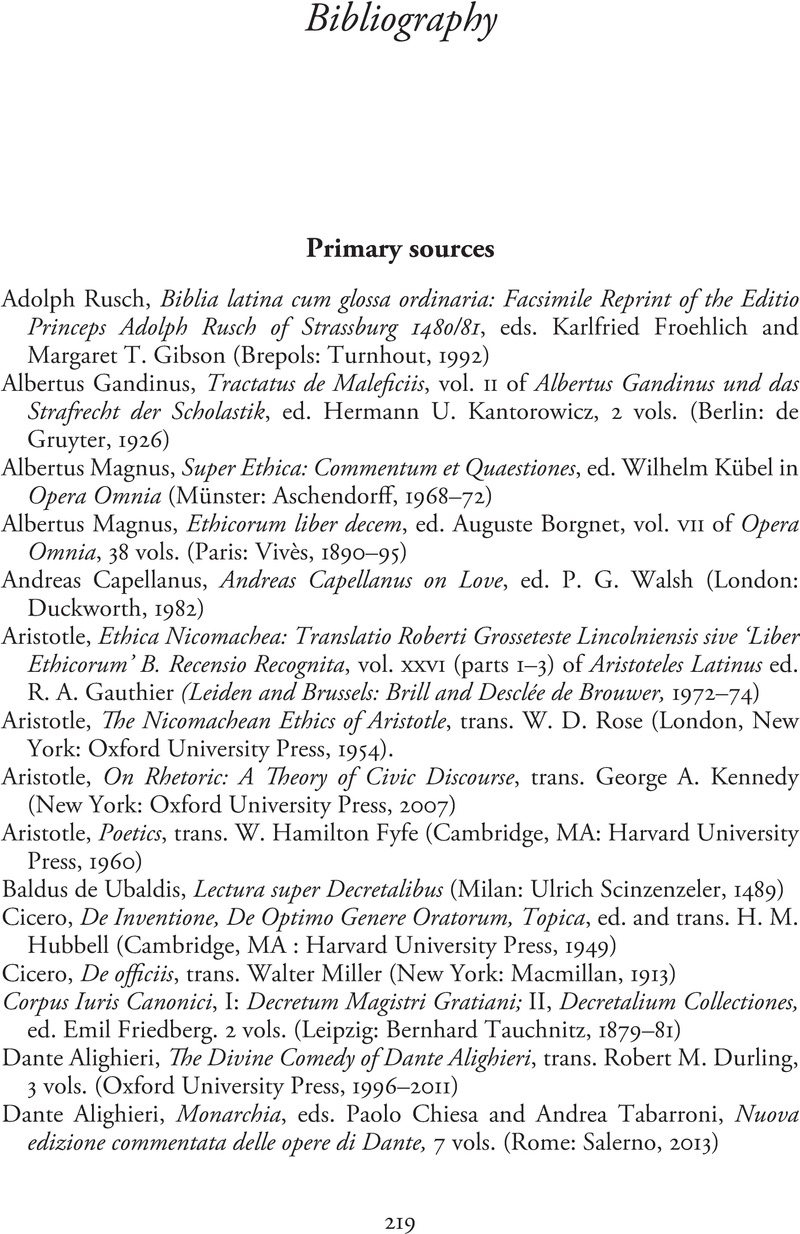Book contents
- Law and Mimesis in Boccaccio’s Decameron
- Law and Mimesis in Boccaccio’s Decameron
- Copyright page
- Contents
- Acknowledgments
- Introduction
- Chapter 1 The Novella on Trial
- Chapter 2 The Artist and the Police
- Chapter 3 The Widow and the Sovereign
- Chapter 4 Torture and the Sense of an Ending
- Chapter 5 Another Way of Possessing
- Chapter 6 The Author on Trial
- Bibliography
- Index
- References
Bibliography
Published online by Cambridge University Press: 07 August 2023
- Law and Mimesis in Boccaccio’s Decameron
- Law and Mimesis in Boccaccio’s Decameron
- Copyright page
- Contents
- Acknowledgments
- Introduction
- Chapter 1 The Novella on Trial
- Chapter 2 The Artist and the Police
- Chapter 3 The Widow and the Sovereign
- Chapter 4 Torture and the Sense of an Ending
- Chapter 5 Another Way of Possessing
- Chapter 6 The Author on Trial
- Bibliography
- Index
- References
Summary

- Type
- Chapter
- Information
- Law and Mimesis in Boccaccio's DecameronRealism on Trial, pp. 219 - 240Publisher: Cambridge University PressPrint publication year: 2023

